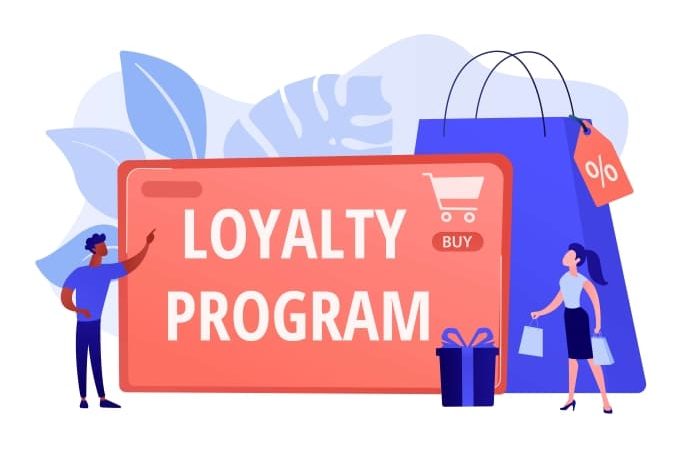Small business owners sometimes find it hard to get access to the necessary funds and resources to invest in loyalty programs. With a limited budget and resources, you have to make sure that you are taking full advantage of it.
However, loyalty programs can be your best friend when it comes to customer retention and marketing. Loyalty programs encourage your customers to stick with your business and keep paying for your products and services. According to a study by MarketingProfs, the cost of acquiring a new customer can be up to five times more expensive than retaining an existing one through a loyalty program.
With a little bit of planning and research, any small business can develop a loyalty program that can benefit the business.
In this article, we will be sharing everything you need to know about loyalty programs – from how you can create one to how to make it unique.
So if you are planning to launch a loyalty program for your business – this article is for you!
Table Of Content
What are customer loyalty programs?
Benefits of reward programs for small businesses
7 Effective customer loyalty programs for small businesses
Steps to take before launching customer loyalty programs
How to make your loyalty program unique?
What are customer loyalty programs?
As you can guess by the name – customer loyalty programs are a reward system that businesses use to reward their loyal customers. This could be anything from discounts, points, freebies, etc…
These programs help businesses to increase engagement and drive sales for their business. As customers are getting rewards for their purchases, they are most likely to buy from your business.
The key benefits of running a loyalty program are that they help you build a good relationship with your customers, boost sales, generate more income, and reduce customer churn.
However, poorly managed and designed loyalty programs don’t deliver desired results. As this can make your customer frustrated and stop purchasing from you.
To make sure that your program is successful, you have to understand what it takes to create a solid customer loyalty program. You must understand – what it is and how it works. You have to do your research, set a budget and define your goals if you truly want to make things work.
With proper planning and research, you can create a loyalty program that can benefit you and your customers both.

Benefits of reward programs for small businesses
Loyalty and reward programs are ideal for increasing customer loyalty and engagement. Here are some of the advantages of loyalty programs that small businesses can enjoy.
1. Increased customer engagement
One of the biggest benefits of running loyalty programs is that it helps to create a strong relationship between customers and businesses. When you offer rewards for repeat business, customers would love to remain loyal to your business and buy even more.
Even if some customers don’t participate in the program, they might change their minds and start buying more frequently from your business.
2. Increased revenue
By offering rewards you can encourage customers to spend money and buy more products. This will increase your sales and will lead to more business revenue.
Customers love when they are rewarded with discounts, coupons, and freebies, So they would love to buy more products from you and even refer your business to their friends and family members.
3. Improved customer retention
Customer retention plays a major role when it comes to measuring the success of your business, especially if you are running a small business. Loyalty programs help businesses to stay connected and engaged with their customers.
This will lead to increased customer retention rates and fewer customer defections – this means businesses can benefit from a loyal customer base.
4. Improved brand recognition
When customers get rewarded with points, discounts, freebies, etc… through your loyalty program – it improves your brand value and helps to reach out to more people.
This will help you build trust with your customers and establish your business as a brand in the industry. In addition to that your customer would love to recommend your business to their friends and family – this means more business and more revenue.

Implement a Loyalty Program to Boost Customer Retention Rates With Octopos
Octopos is a lot more than a point of sale. It is easy and intuitive for you and your staff to use. Yet you get all these sophisticated tools to manage inventory, track and engage customers, get meaningful insights into your business, and much more.
5. Customer data acquisition
Customer data is very valuable when it comes to running a successful small business. You can use it for identifying customer profiles, understanding customer behavior, improving marketing initiatives, etc…
With a solid loyalty program in place, you can easily collect the data of your regular customers and offer them personalized rewards and discounts.
7 Effective customer loyalty programs for small businesses
There are many different types of loyalty programs available for small businesses – these 7 of them are known as the effective and popular ones. Depending on your business model you can pick any of them and try experimenting with them.
1. Point-based loyalty programs
One of the most common types of loyalty programs is point-based programs. As you can tell by the name – point-based loyalty programs allow customers to earn points for each purchase they make.
They can later redeem these points for rewards such as discounts, coupons, freebies, exclusive offers, etc… Point-based loyalty programs allow business owners to track customers’ data and buying patterns to come up with these reward points.
2. Tiered loyalty programs
Tired-based programs reward customers when they move up tiers. For example, a store can set tiers for their customers – such as, if a customer buys regularly for 30 days from the same shop, they can move to tier 1 or 2.
Businesses can then set loyalty programs for certain tiers and give customers rewards depending on their purchases. It helps businesses to identify loyal customers and build good relationships with them.

3. Paid loyalty programs
As you can guess by the name – paid loyalty programs are loyalty programs that allow customers to pay upfront and in return, they get exclusive offers and discounts. Paid loyalty programs are one of the best ways for customers to come back.
This type of loyalty program is ideal for businesses that sell high-end products and services. Customers would love to pay upfront fees to get discounts and exclusive offers for these products.
These programs are also known as VIP memberships and it’s one of the best ways to increase customer loyalty and keep customers coming back for more.
4. Referral loyalty programs
Referral programs are some of the most popular and effective loyalty programs that small businesses can take advantage of.
This loyalty program rewards customers when they refer your business to their friends and families. In return, they receive discounts, cash back, and other rewards.
Referral programs help businesses expand their business and customer base without investing tons of money into advertising campaigns.
5. Partnership loyalty programs
Partnership loyalty programs allow businesses to build alliances with other businesses and brands. Under this program – customers earn rewards from both businesses when they make a purchase.
Let’s say, you own a clothing store and you are in a loyalty partnership with a local shoe store. So when a customer buys something from the shoe store, they get rewards such as discounts if they buy something from your t-shirt from your store and vice versa.
This is a win-win situation for both businesses as well as for customers.
6. Game-based loyalty programs
Game-based loyalty programs are great for engaging customers and keeping them coming back for more. You can create custom games that your customers can play and if they win they get rewards.
Game-based loyalty programs are ideal for businesses that have lots of younger customers. It helps to keep the customers engaged and entertained while also allowing businesses to generate more revenue.
7. Hybrid loyalty programs
As you can guess by the name – hybrid loyalty programs combine two or more different loyalty programs into one. Hybrid loyalty programs are ideal for businesses that have multiple customer segments and want to reward every segment individually.
For example, let’s say – a restaurant business can offer a discount to its regular customer while also offering a refer-a-friend reward for every new customer they brought in. This helps to boost customer loyalty and create incentives for customers to keep coming back to your business.

Steps to take before launching customer loyalty programs
So now that we know what a customer loyalty program is and how it works, let’s find out how you can launch one. Depending on your business type and preference, you can adjust according to your needs.
1. Decide whether or not you need a loyalty program
The first thing you need to decide is whether or not loyalty programs are for you. Make sure to consider these factors before you make a decision
- Cost
- Resources
- Time
- Customer lifetime value
- Hiring employees to track the customers and the loyalty program
By looking at these factors, you can make an informed decision about running a loyalty program for your business. However, if you find it a bit overwhelming, you can go with other marketing options as well.
2. Identify your target audience
Once you have decided that you want to run a loyalty program, you will need a target audience. You have to understand who they are and what their need is to make sure that your loyalty program appeals to them.
You also have to figure out what rewards will appeal to them the most and how you can incentivize them to stay loyal to your business. Make sure to take time with this step – as it is an essential part of your loyalty program.
3. Choose the type of loyalty program
As we mentioned earlier, there are several different types of customer loyalty programs available. Depending on your business type, you have to pick one or more that is suitable for you and your customers.
Each loyalty program has its pros and cons – so make sure to research them carefully before making any decisions. If you are still confused, you can consult with experts in the field or try out different types of programs to see what works best for your business.
4. Set up a reward system

Once you have decided what type of loyalty program you want to run, it’s time to set up a reward system. This includes deciding what rewards you are going to offer and how customers can earn them.
You also have to decide how long each reward is going to stay valid and if there is any limit to the number of rewards customers can get in a particular time.
Depending on the type of loyalty program you are running, you also have to set up a tracking system so that customers can keep track of their rewards and points.
5. Set a budget for the loyalty program
Launching loyalty programs requires money and resources so it’s very important to set a budget accordingly.
You have to make sure that the cost of launching and maintaining the program won’t affect your business in general. Plus, it should not outweigh the benefits you are hoping to gain.
This includes costs such as staff hours, rewards, technology, customer support, etc… Make sure to factor in every cost before launching your loyalty program.
6. Set realistic goals
When it comes to loyalty programs, setting realistic goals is extremely important. You should have a clear idea about what you hope to achieve and the timeline you want to accomplish it.
For example, let’s say, your goal is to increase customer engagement by 10% within six months. Once you have set realistic goals, you can work on tracking progress toward them and make adjustments as needed.
7. Monitor your progress
Even after you have launched your loyalty program, you have to monitor its progress to ensure that it’s meeting your goals.
You have to keep track of your customers’ activity and engagement as well as the number of customers who are taking advantage of the reward system. By tracking the progress, you can make changes according to the program as needed.
Don’t forget about the feedback. Review the feedback you receive from your customers to understand what’s working and what’s not. You can use this information to improve the program and make sure that your customers are getting the best possible service.
How to make your loyalty program unique?
So now that we know how to create a loyalty program for your business – let’s find out how to make it unique:
Here are a few ideas that you can use
- Customize the rewards depending on your customers’ preference
- Add exclusive rewards for your loyalty programs
- Create loyalty programs that can be accessed with different devices
- Remind them that you are running loyalty programs (via SMS, Email. Social Media, etc…)
- Keep things simple
- Look what your competition is doing and make it better
These are just a few ideas that you can use to make your loyalty program unique. Make sure to do your research and come up with your ideas to make things even more personalized.
Conclusion
In conclusion, setting up a customer loyalty program can be a rewarding business plan. By following the steps and tips mentioned above, you can create an effective loyalty program that will meet your goals and encourage customers to keep coming back.

